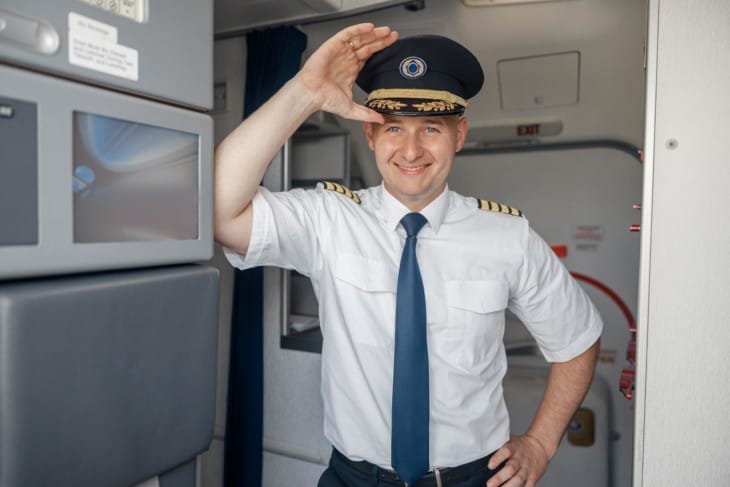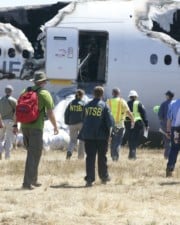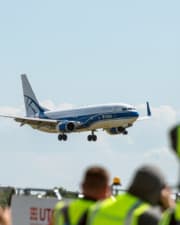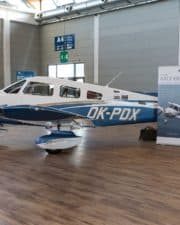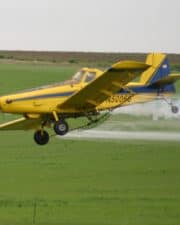Deadheading is one of those concepts that’s interesting to outsiders and avgeeks, but hated by crews the world over for a variety of reasons. If you don’t work as an airline pilot or in aviation in general, it’s highly likely that you’ll have wondered what exactly deadheading is.
Table of Contents
Airlines frequently use deadheading to position their staff in the right place to begin their duties. Airlines will block specific seats on regular passenger flights for deadheading crews.
Typically, deadheading crews will travel in uniform or civilian clothes, depending on the circumstances, but will always travel as a non-working crew, forbidding them from serving passengers or delivering safety briefs during the flight.
Why Is It Called Deadheading?
The origin of the term is unknown, but many people speculate that it comes from the railroad industry. In earlier days, locomotives were powered by wood or coal, and the locomotive fireman were responsible for stoking the fire to keep the steam up and maintain water levels.
If a locomotive was not delivering freight or passengers, it was said to be deadheading, as it wasn’t making the railroad company any money, eg. a dead leg.
Beginning in the second so-called “Golden Age of Aviation” of the 1950s, the usage was extended to the idea of a person who traveled on a plane without paying, especially for those flying to start work somewhere else or to get home after a series of flights.
Do Crews Get Paid When Deadheading?
In most airlines, crews will get paid when they are deadheading, even if they are not performing any active duty. After all, you are traveling to be in the correct position for your next flight or series of flights.
The amount you get will depend on the airline but is the same as if you were on active duty in most cases. That wasn’t always the case if you think back, and some airlines used to require crews to pay their way when deadheading not too long ago.

If any costs apply during your trips, such as accommodation costs, transportation to or from the airport, and meal expenses, the airline will also cover these costs. An arrangement where the hotel reservation is arranged for you, and you get an additional daily allowance is also widespread.
Overnight accommodation is most often required if you fly in from your home base and must maintain your legally needed rest before you can work as an active crew member on a flight. Since most airlines count deadheading time as working time, this will often happen after a long-haul deadhead flight.
The Difference Between Deadheading And Standby Travel
Deadheading is when the company requires you to be posted at an airport or city to start your duty. As a result, these flights are always free for crew members. On the flip side is that you can’t choose your deadhead route, and unpopular connections, long waiting times, or early departures are no exception.

On the other hand, standby travel is a benefit aviation industry members use to fly cheaply for leisure purposes. These tickets must be paid for individually, but you can get a considerable discount. Often with discounts of 80-90% off a regular ticket.
Even some pilots and flight attendants use standby traveling to commute to work. For example, if their base is in New York, they could technically live in Texas and fly in the day before a flight is scheduled. While this is a great way to reduce the cost of traveling, it cannot be easy to make this work.
Although standby traveling is excellent because it is so cheap, there is also a risk that comes with it. You can only fly if there are seats available. If the flight is fully booked, that’s too bad for you, and you don’t get any compensation or assistance.
It’s possible on popular routes or flight cancellations that there are 50 people or more on a standby list, and only two seats are available. In this case, the seats will be assigned based on various factors such as seniority, travel class, etc.
Why Is Deadheading Sometimes Necessary?
Crew replacement
The most common reason why deadheading is necessary is that a crew member became sick or suffered from an accident and needs to be replaced. This is because there are legal requirements, such as how many flight attendants are required for a certain number of passengers.
If one flight attendant cannot perform the duties, the airline’s only option is to fly a replacement in or offload and rebook many passengers.
Positioning
Another reason for deadheading is to get a crew to their next duty station. For example, if you are based in New York and have to fly to Los Angeles for a series of flights, you will first have to deadhead to LA. The same goes when you are based in LA and have to fly to New York.
Schedule changes
Canceled flights due to delays, storms, or other circumstances are a common reason. If an aircraft and the respective crew get stuck and aren’t available as planned, it can shake up the airline’s planning for the next day.
For that reason, in rare cases, airlines can give deadheading crews a higher priority than paying passengers. Even if they have to offload one passenger and compensate them, it is still cheaper than the chaos it creates if one crew or airplane ends up at a different airport than planned.
Jump seats
Another option for deadheading crew to travel is on the jumpseat. Jumpseats are foldable auxiliary seats for additional crew members in the cockpit or an aircraft galley.
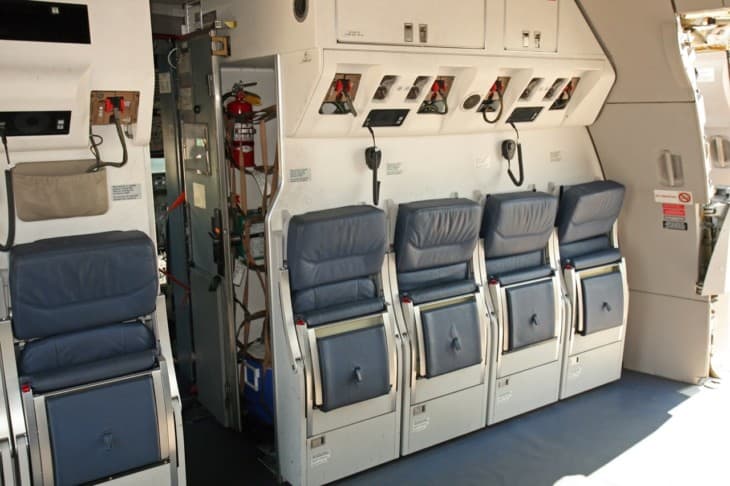
Depending on the aircraft type, there are 1-3 jumpseats available. The reason why this is not very popular among most crew members is that these types of seats are pretty uncomfortable for longer flights.
There is also no inflight entertainment, and you often disturb the working crew because the space is limited.
Cheaper to go home
There are also circumstances where it’s cheaper for the airline to fly the crew back to their home base rather than paying for accommodation and other expenses. Especially if the layover of the crew would be very long, airlines prefer them to deadhead.
Jump seats are assigned with the approval of the pilot in command and by federal requirements.
Training
The last reason why airlines might deadhead crews is for training purposes. If a company takes a new aircraft type into the fleet, it always requires additional training for pilots and flight attendants.
In addition, similar annual sessions to train emergency scenarios are also necessary for all crews. Because these simulators are such an expense, an airline might deadhead crews so that they can receive the required training.
Deadheading vs Ferry Flights
The difference between deadheading flights and ferry flights is that deadheading flights position crew to other locations, whereas ferry flights position aircraft to different locations.
Imagine a plane flies from Los Angeles to Atlanta as a regularly scheduled flight. However, especially in the covid situation, the aircraft may do a ferry flight back to Atlanta after. This means an empty flight without passengers on board.
In this scenario, the cabin crew is on active duty on the first flight but traveling back to Atlanta as passengers on the same plane. Therefore, the second flight would also be considered a deadhead flight for the cabin crew in this scenario.
You will see ferry flights mainly if the aircraft is urgently needed to operate a flight from a different airport than scheduled. However, it is also possible that ferry flights are planned in rare cases.
Another realistic scenario for ferry flights is when an airline carries very lucrative cargo. A flight may still be profitable, even without passengers. In this scenario, the minimum required amount of cabin crew is on board.
What Are The Advantages Of Deadheading?
We have already discussed that airlines sometimes have no choice but to deadhead their crews to maintain their operation. If there is another option, airlines will look for ways to save money; sometimes, deadheading can be an attractive and cheaper option.
As a crew, the main advantage is that you get paid flying as a passenger while actively working. Therefore, you can eat, sleep, or watch movies just like a regular passenger.
In addition, the bond between airline crews is usually robust, so if you introduce yourself nicely, chances are very high that they will give you an upgrade if possible.
For more experienced personnel, it can mean an opportunity to fly different routes or aircraft types if you are based somewhere where those opportunities don’t regularly come up.
When you are deadheading in uniform, you should also be prepared to get involved in conversations with fellow passengers. These encounters are primarily friendly, and sometimes you can get involved in exciting discussions.
I have personally also experienced that passengers are confused and try to order beverages from you. However, as a deadheading crew, you are not supposed to work unless there is an emergency.
Just know that if you are traveling, you represent your airline, and you should behave accordingly. For example, you are expected to always comply with all crew members’ instructions, pay attention to the safety demonstration (even if you are the only one), and help in case of an emergency.
Theoretically, if you are deadheading as a pilot, it is also possible that you will get asked to help in case one of the active pilots gets incapacitated. Even if you do not have the rating on that specific aircraft type, you could still be considered the best option to assist with radio communication, for example.
From the airline’s perspective, the main advantages are that they can keep to their schedule and don’t have to cancel flights or offload passengers.
Additionally, it is also a way for them to save money if they can avoid long layovers for crews. That way, the crew can operate more flights and is cheaper to employ as a result.
However, there is always a balance between cost-effectiveness and responsibility for your employees. If crews have to travel extensively to start their duty, it increases the risk that they burn out or report fatigue for the flight.
The Disadvantages Of Deadheading
For the airline
The disadvantages for the airlines are that it can be expensive, as they have to pay for the crew’s travel, accommodation, and meals. It can also cause disruptions to the crew’s home life if they are suddenly asked to deadhead with little notice.
In the long run, extensive travel requirements for crews in combination with minimal rest can also cause a safety risk. Mistakes due to fatigue are a prevalent issue in the aviation industry.
If a ferry flight is needed, fuel costs for the flight and salary costs for the crew cumulate without any ticket sales.
For the crew
The main disadvantage for the crew is that it can be disruptive and tiring, especially if you are flying long distances or across time zones. For example, if you are flying on a long-haul flight and then have to catch a connecting flight for your next duty, you might not get much rest.
This could potentially be especially difficult if you are flying in from your home base and need to maintain your legally required rest before you can work as an active crew member on a flight.
In addition, often you will have to catch flights early in the morning or late in the evening as they have more seats available.
Tips For A Deadheading Flight
Here are a few tips on preparing for your next deadheading flight to finish off:
- At the beginning of the flight, introduce yourself to the cabin crew and tell them you are happy to help with anything they need.
- Bring a comfortable change of clothes and any essentials you might need, such as toiletries and medications.
- If you are flying across time zones, try to adjust your sleep schedule in advance so that you don’t arrive feeling jet lagged.
- The last piece of advice is to make sure you pack everything you need for your deadhead flight in your carry-on luggage, especially your uniform (if you are not already wearing it). Layover times after a deadhead flight will be very short, and you run into trouble if you must work on a flight, but your uniform is in a lost checked bag.
Related Posts
